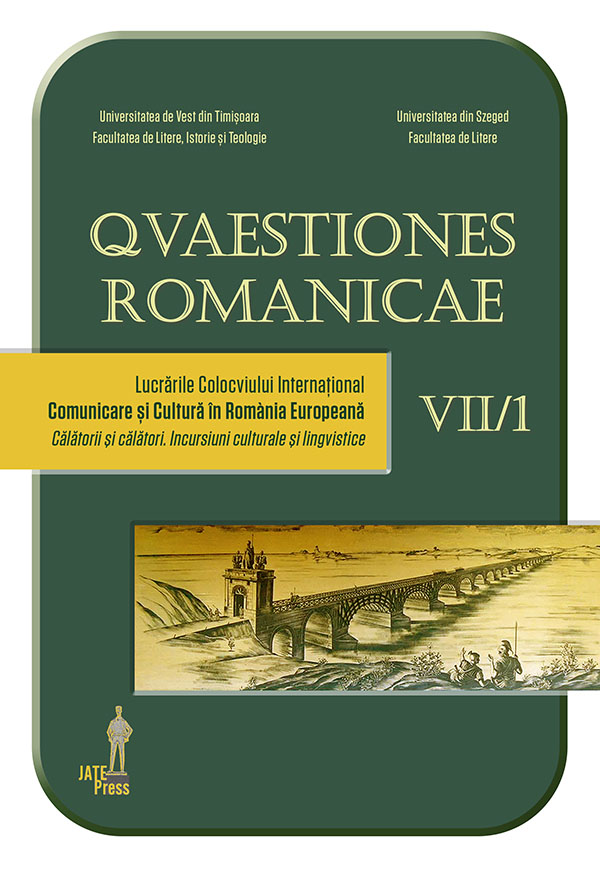Mobilità e migrazioni tra il Veneto e la Romania: un viaggio nella storia e nella memoria tra passato e presente
Abstract: (The Epic Transalpine Migration of Ice-Cream Makers: a Trip Down the Memory Lane) The present contribution focuses on seasonal migrations from the Venetian mountains to the territories of the Middle-East Europe and it is based on the historical and economic relationship between Romania and Veneto. Between the eighteen and the nineteen century, Italians emigrated to Romania to find jobs in the construction of buildings. In mid-1800, a qualified group of seasonal migrants emigrated, especially from “Bellunese” to Eastern Europe; and were employed during the winter season for the construction of roads and railways (the ‘“esamponari’’) or for woodcutting jobs (the ‘’squarador’’). During the summer months, a large number of itinerant candy sellers joined this flow of emigration, to which the sale of ice cream subsequently took over. A trace of both of these flows of migration still remains in the documented oral accounts of Venetian ice-cream makers, to which they referred to as a unique and still active form of seasonal emigration, which have been practiced by the entire Northern-Veneto valley since 1880. First of all, they went to Vienna and to the neighboring territories of the Hapsburg Empire, then throughout Europe, especially in Germany immediately after the II° world war. This material was abstracted from my doctorate thesis entitled I gelatieri veneti in Germania–un’analisi sociolinguistica (Venetian ice-cream makers in Germany – a social linguistic analysis) and published in 2006 by Peter Lang (Frankfurt). It is based on both qualitative and quantitative investigation. Furthermore, thanks to the authentic testimonies, it will be possible to take a fascinating ‘’journey’’ down the memory lane of mountain valleys, that is dedicated to the seasonal production and sales of ice-cream according to tradition.
Keywords: Veneto, Romania, seasonal migration, historical professions, oral memory.
Riassunto: Il presente contributo tratta dei flussi migratori stagionali dalla montagna veneta verso i territori dell’Europa centro-orientale, anche in considerazione anche della consolidata relazione storico-economica tra la Romania e il Veneto. Tra l’Ottocento e il Novecento furono gli italiani ad emigrare in Romania come lavoratori edili. Soprattutto il Bellunese fu interessato dalla metà dell’Ottocento da un considerevole flusso migratorio stagionale verso l’Europa centro-orientale (anche in Romania), utilizzato, in inverno, nella ristrutturazione di strade e ferrovie (esamponari) o nei lavori connessi al taglio delle piante (squarador). A questa migrazione se ne aggiunse un’altra, nei mesi estivi, di venditori ambulanti di dolciumi, a cui subentrò in seguito la vendita del gelato. Di entrambi i flussi resta ancora traccia nelle memorie orali dei gelatieri intervistati che riferiscono di una forma singolare e tuttora attiva di emigrazione stagionale, praticata dal lontano 1880 da intere vallate dell’Alto Veneto, inizialmente diretta a Vienna e nei territori limitrofi dell’Impero asburgico e, subito dopo la II guerra mondiale, soprattutto in Germania. Il materiale qui proposto, estrapolato dalla mia tesi di dottorato dal titolo I gelatieri veneti in Germania–un’analisi sociolinguistica, pubblicata nel 2006 dalla Peter Lang di Francoforte sul Meno, si basa su un’indagine sia quantitativa, sia qualitativa. Grazie alle testimonianze autentiche sarà, pertanto, possibile intraprendere un affascinante “viaggio” nella memoria di intere vallate montane, dedite da secoli, secondo tradizione, alla produzione e vendita stagionale del gelato.
Parole chiave: Veneto, Romania, emigrazione stagionale, professioni storiche, memoria orale.
